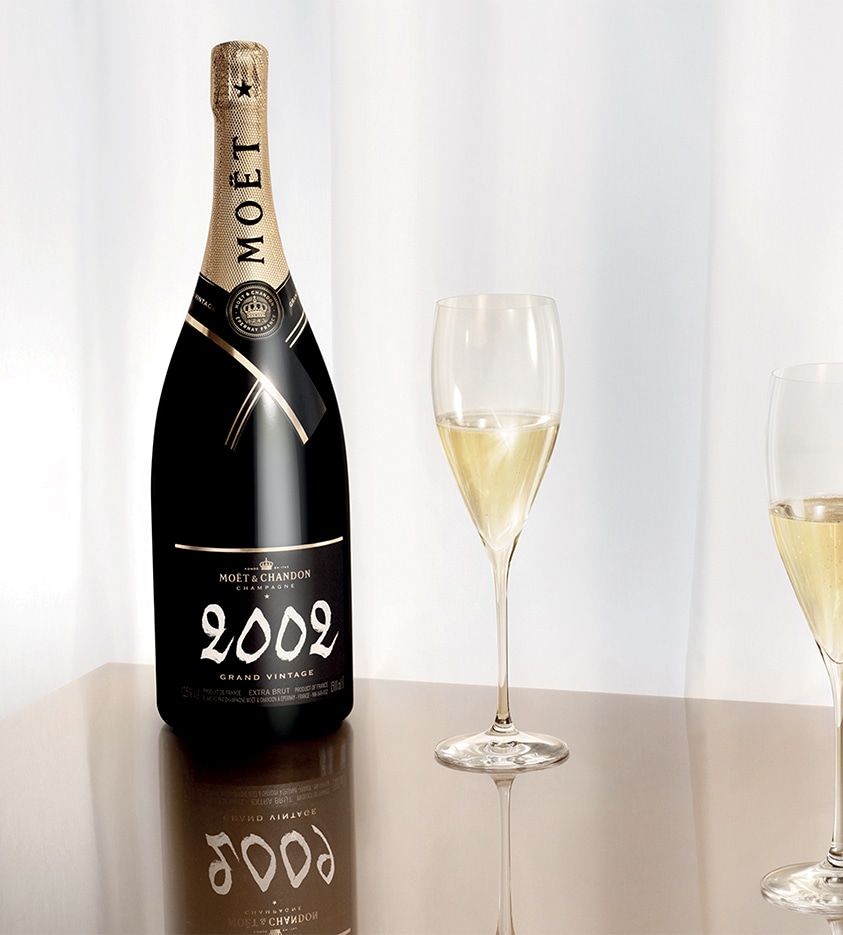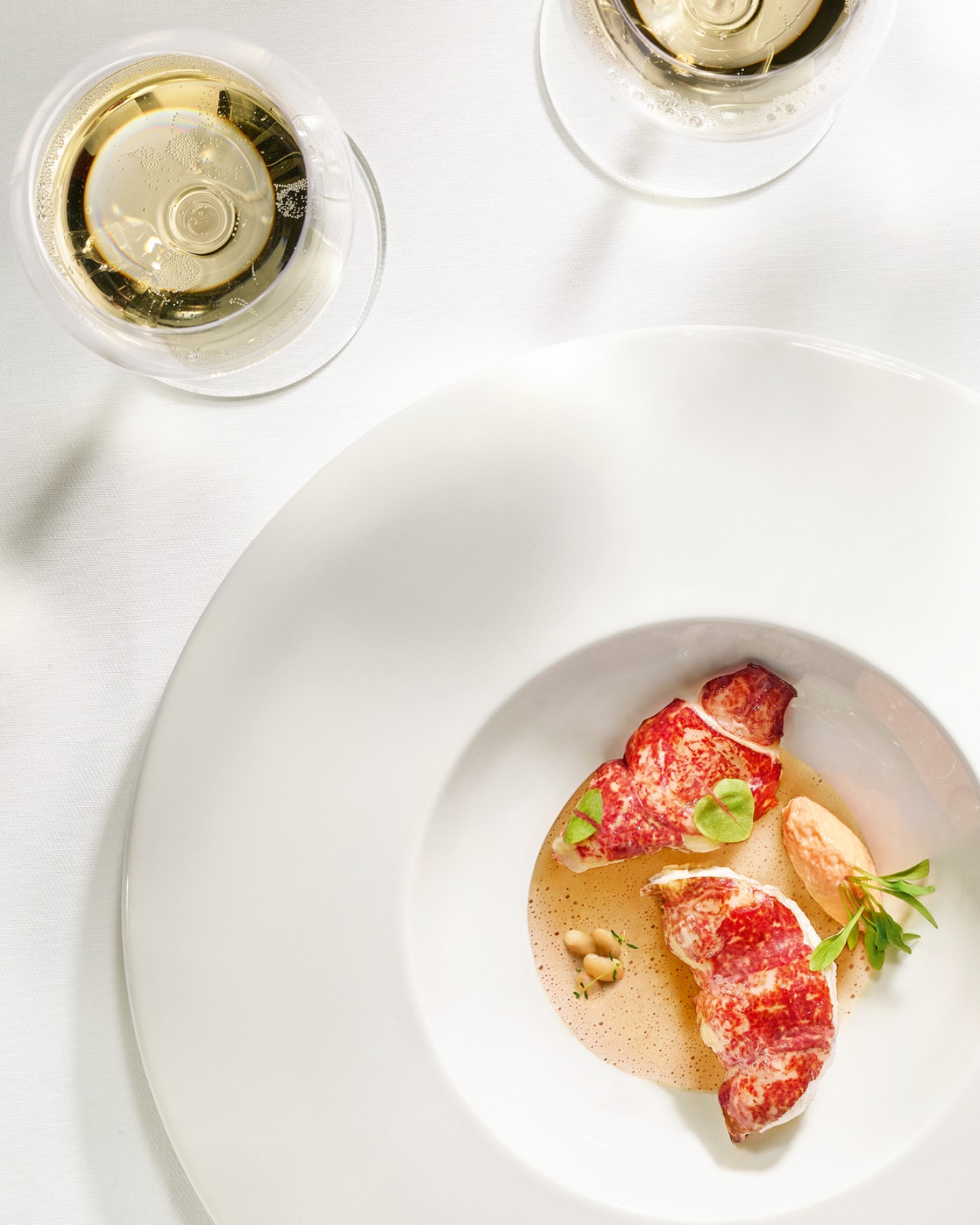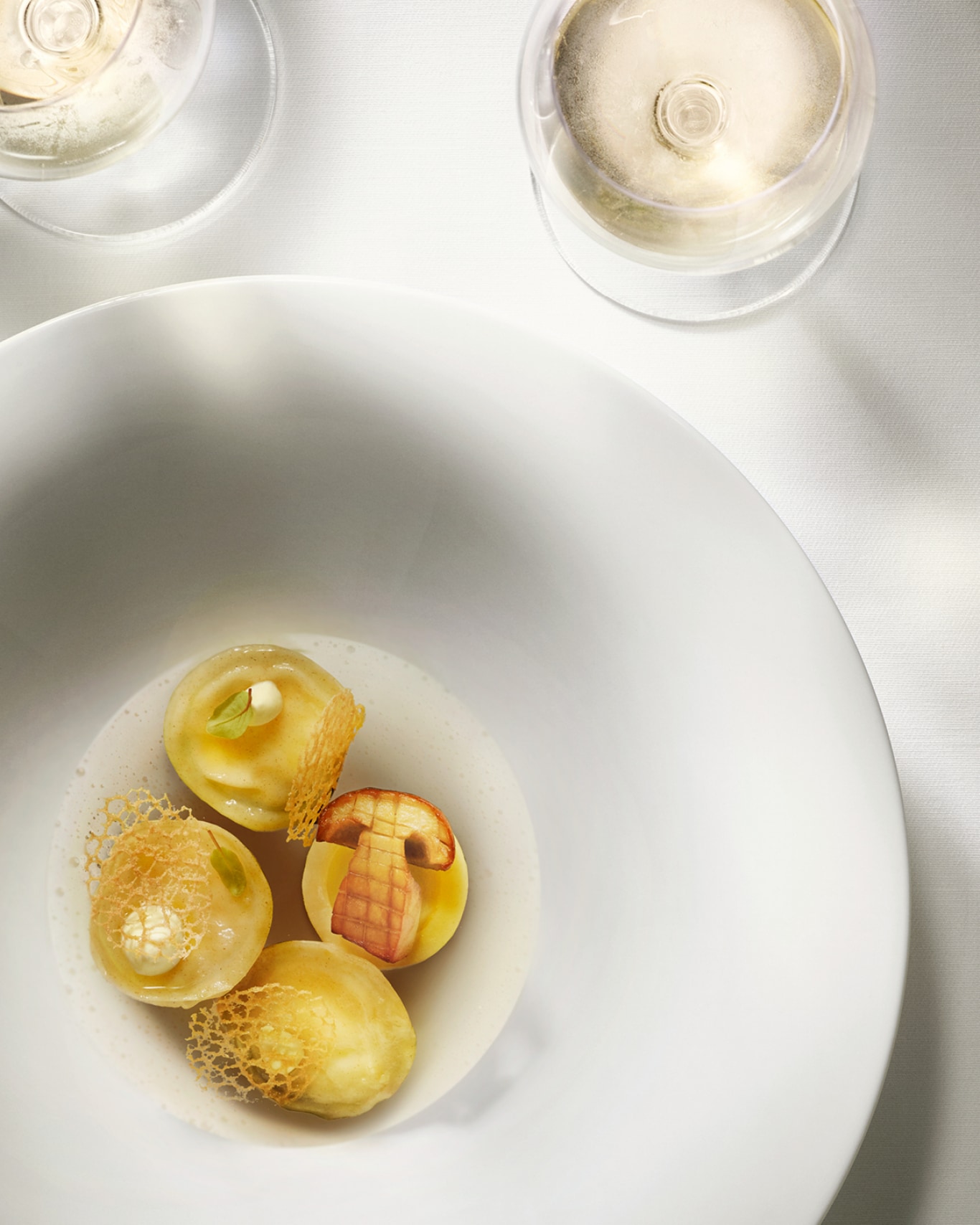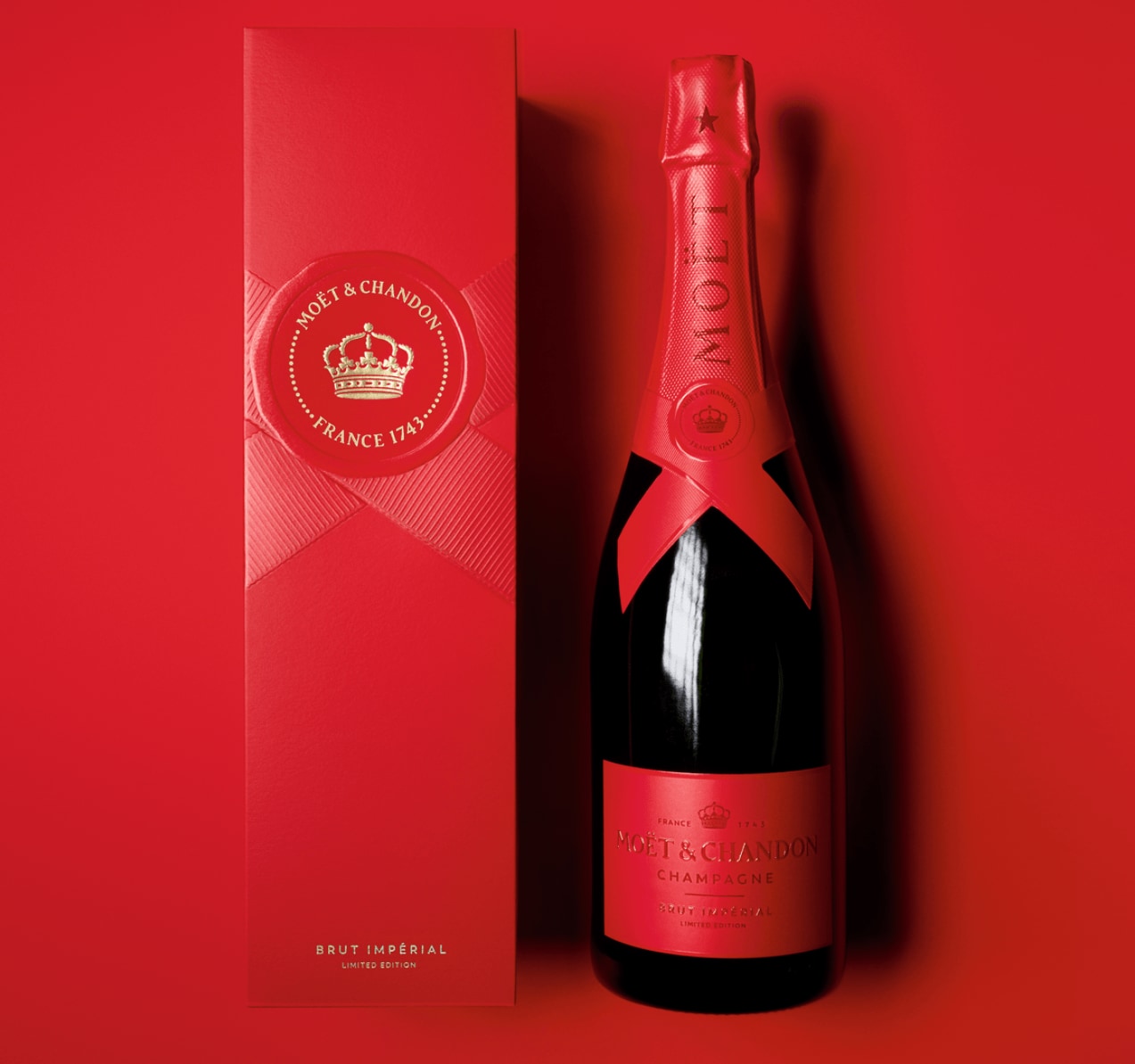Grand Vintage Collection 2002
Grand Vintage Collection 2002
tasting notes
COMPOSITION
In this wonderful vintage, Chardonnay (51%) dominates the blend with all of its brilliance, proving itself to be fresh and generous at the same time. Its almost equally-weighted companions are Pinot Noir with intense fruity notes (26%) and Meunier which brings full-bodied consistency (23%).
A SUBLIME APPEARANCE
Deep and bright gold, it is adorned with golden yellow glints.
A COMPLEX AND MATURE NOSE
Pear, citrus, mirabelle plum, nectarine: after 15 years of maturation, the initial fruity notes still linger, and become even more candied. But its maturity is evident: dark and toasted, with warm notes of crispbread and mocha, nougatine and cinnamon biscuits, grilled chestnut and cigar. A smattering of scrubland aromas and honey notes add to the complexity.
A SMOOTH, PRONOUNCED PALACE
The opening is solid, deliberate and dense, but never heavy. The texture is thick. It is both sticky and crunchy, like crystallized fruit, nougatine or a candy apple. The finish brings licorice and peppery notes, it is lively and sweet.
DOSAGE
5,5 g/liter
CELLARING TIME
15 years
AGING AFTER DISGORGEMENT
At least 6 months
CHROMATICITY
In the mouth, the palette of this Grand Vintage Collection 2002 champagne is reminiscent of a shimmering shade of yellow: the toasted and golden blond colour of brioche, the sparkle of a yellow gold nugget, the rich and creamy yellow of farm-churned butter, the matte nuances of ripe wheat and frangipane, the coppery yellow of roasted almonds.
TEXTURES
With its lively character and full body, this champagne requires weighty textures, reminiscent of raw ceramic, golden mat, or the deep and radiant glow of candied fruit or the firm and shiny density of a candied chestnut.
do
This is a perfect champagne to serve with dinner, it offers candied aromas and complex flavours, and will pair beautifully with dishes that have been cooked slowly.
Explore the hidden side of Mediterranean cuisine, like a ratatouille without red peppers but with pine nuts and dried apricots.
Play around with the contrast between very ripe fruit and controlled vegetal content.
Bring dishes from the past (Gascon garbure, kig ha farz, stews, etc.) into the modern present with a more luminous character, but not forgetting the richness of the origins.
Cook fish gently in foaming butter, basting all the while.
Cook at low temperatures (olive oil bath at 60°C).
Try out complementary contrasts. For example, grilled bacon and langoustine with a spicy fruit sauce.
don't
-
Materially and chromatically cold for a taste of the sea (like that of oysters).
-
Red crustaceans.
-
The pronounced acidity of unripe citrus.
-
Fresh raw and unseasoned fruit.
-
The powerful bitterness of overly seared spices.
-
Bisques made with crustaceans or fish, too potent in taste and too strong.
-
Recipes without contrasting textures.
-
Bouquets garnis (or herbs) that have been infused for too long (bitterness).
-
Soft cheeses (Camembert, Brie de Meaux, Chaource, Brillat-Savarin, etc.)
Ingredients matrix


pourquoi ?
Jutosité délicate et élégante
Œufs de poisson (pour le craquant
et la salinité iodée)

Quel ingrédient ?
(daurade, bar, turbot, St. Pierre, Sole)
Œufs de poisson

Comment ?
Cru
(daurade, bar, turbot, St. Pierre, Sole)
Œufs de poisson
Cuit
Poché et servis avec une mayonnaise
vis avec une mayonnaise


Ingredients matrix
Grand Vintage Collection 2002

Ingredients matrix
Grand Vintage Collection 2002
Poisson
Pourquoi ?
Mâche non excessive
Jutosité délicate et élégante
Œufs
de poisson (pour le craquant et la salinité iodée)
QUEL INGRédient ?
Poissons à chair blanche
(daurade, bar, turbot, St.
Pierre, Sole) Œufs de poisson
Comment ?
Cru :
Sushi, sashimi, carpaccio
Mariné “à la
tahitienne” (Citron vert, gingembre, lait de coco)
Ceviche
sans excès de vinaigre
ou de soja
Cuit :
Rôti
sans excès de coloration
Poché et servis avec une
mayonnaise vis avec une mayonnaise
COquillages
Pourquoi ?
Mâche non excessive
Jutosité délicate et élégante
Œufs
de poisson (pour le craquant et la salinité iodée)
QUEL INGRédient ?
Poissons à chair blanche
(daurade, bar, turbot, St.
Pierre, Sole) Œufs de poisson
Comment ?
Cru :
Sushi, sashimi, carpaccio
Mariné “à la
tahitienne” (Citron vert, gingembre, lait de coco)
Ceviche
sans excès de vinaigre
ou de soja
Cuit :
Rôti
sans excès de coloration
Poché et servis avec une
mayonnaise vis avec une mayonnaise
Crustacés
Pourquoi ?
Mâche non excessive
Jutosité délicate et élégante
Œufs
de poisson (pour le craquant et la salinité iodée)
QUEL INGRédient ?
Poissons à chair blanche
(daurade, bar, turbot, St.
Pierre, Sole) Œufs de poisson
Comment ?
Cru :
Sushi, sashimi, carpaccio
Mariné “à la
tahitienne” (Citron vert, gingembre, lait de coco)
Ceviche
sans excès de vinaigre
ou de soja
Cuit :
Rôti
sans excès de coloration
Poché et servis avec une
mayonnaise vis avec une mayonnaise
INSPIRATIONS
snacking
Etiam lobortis rutrum purus interdum finibus.
Ut vitae cursus est. Vestibulum vulputate ac libero ut scelerisque.
Nam rhoncus cursus enim, nec sollicitudin tortor porttitor ut.






